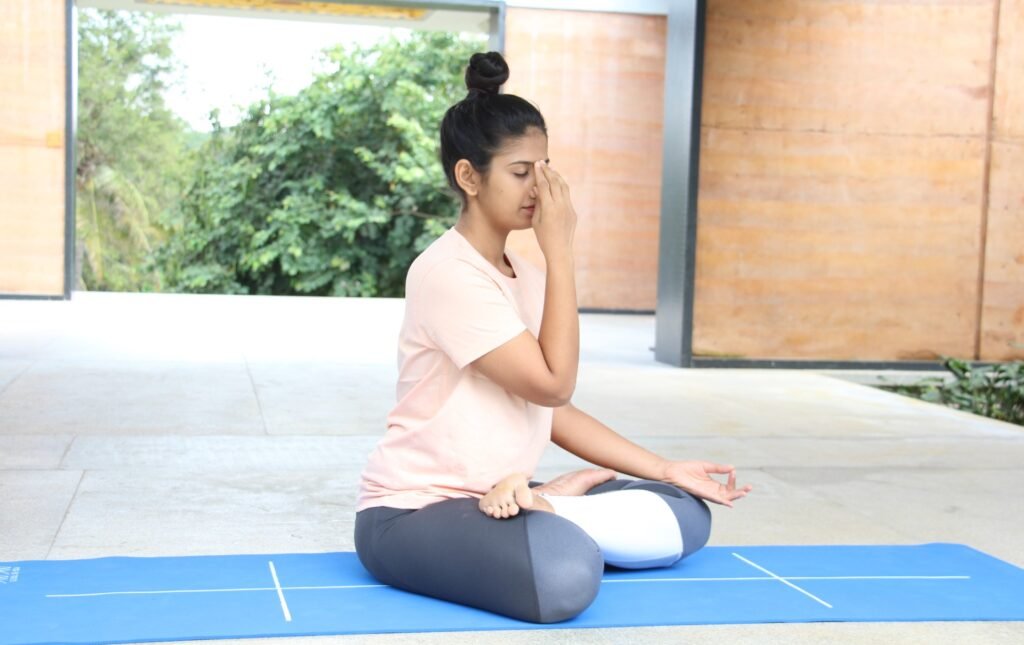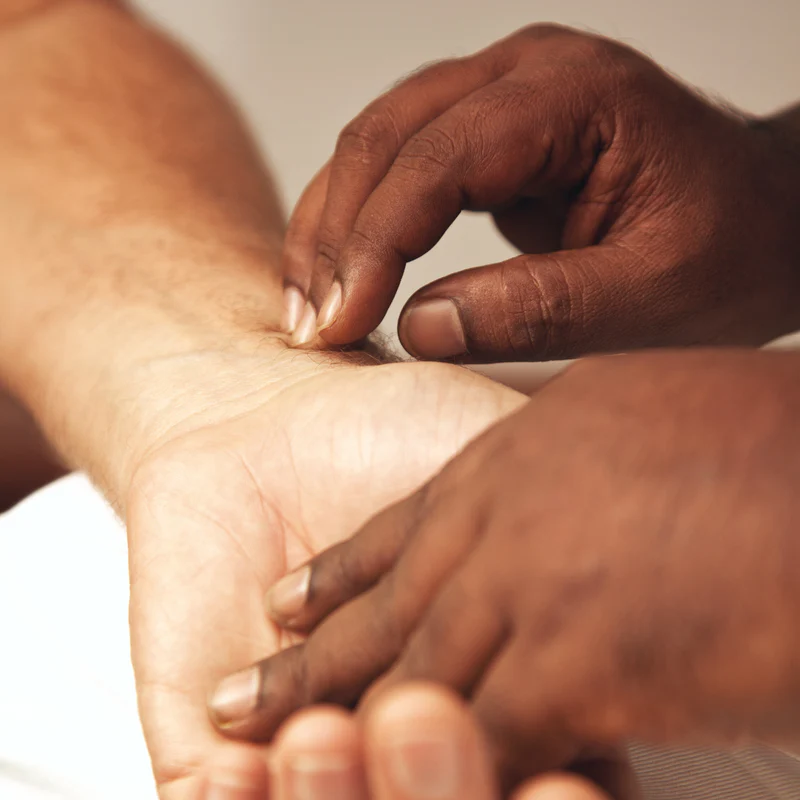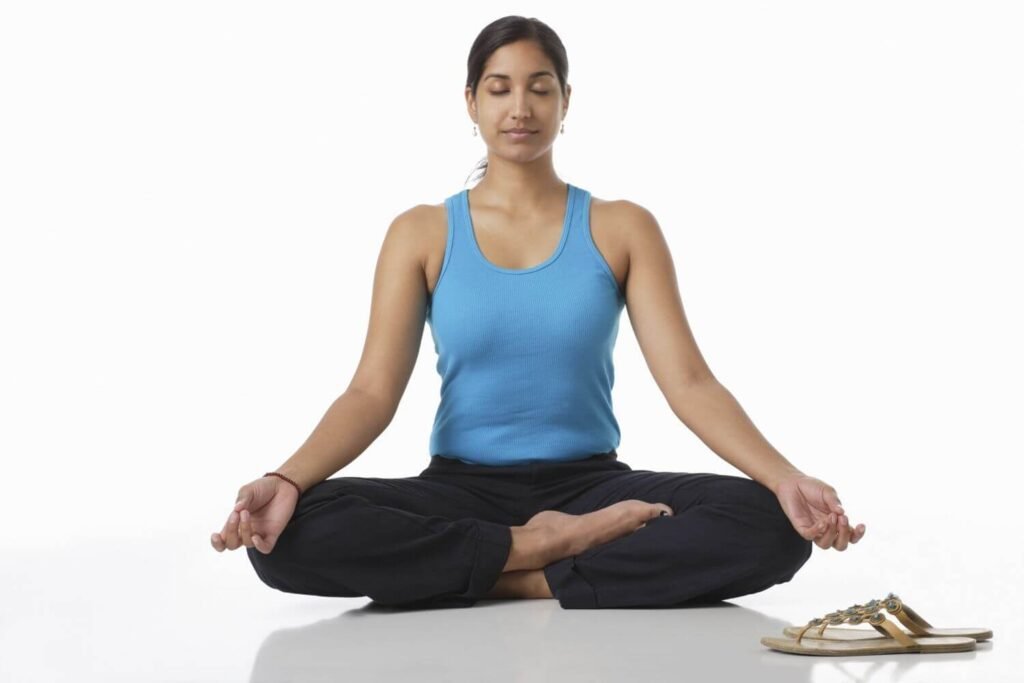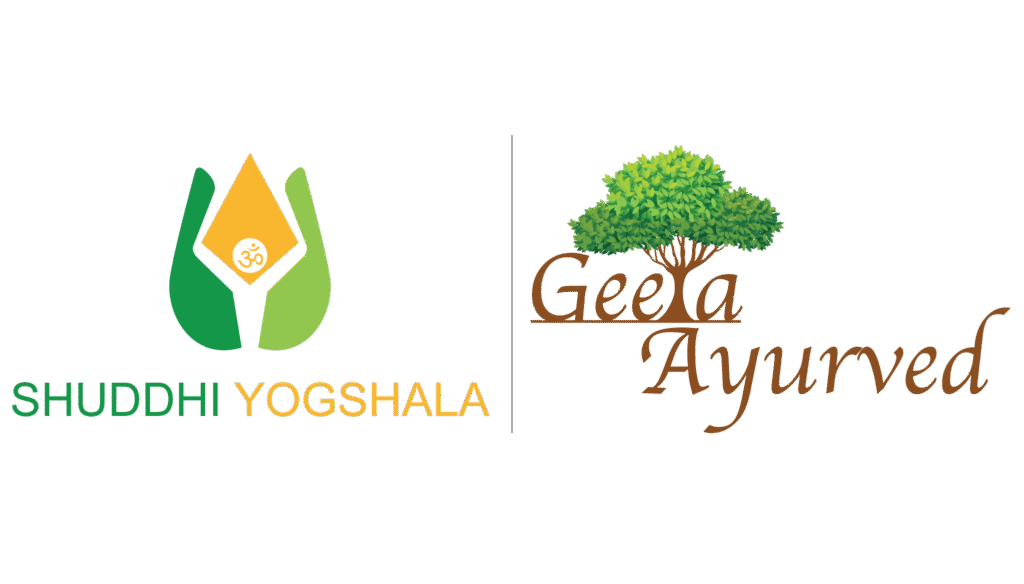PRANAYAMA

PRANAYAMA
If you’re searching for online yoga classes near me, it’s important to understand the foundational practices that enhance your physical and mental well-being—one of which is Pranayama.
Pranayama consists of two words meaning Life and Dimension. “Prana” refers to life or vital energy, while “Ayama” means extension or expansion. In this sense, Pranayama is the practice that helps expand the dimension of life and potentially increase one’s lifespan. It is considered a powerful technique to channel and control life energy through breath.
The yogic definition of Pranayama goes beyond simple breathing—it is about mastering the life force. To fully appreciate its benefits, it’s essential to first understand what “Prana” is and how it operates within the body.
WHAT IS LIFE?
If you’re searching for online yoga classes near me, it’s essential to understand the concept of life energy, or Prana, to truly enhance your practice.
Prana is the conscious energy or light that permeates everything—not just the vast universe but also the small body within. This vital force enables the mind and senses to function. Prana flows subtly and continuously, entering the body like the wind through the nostrils and circulating through the main organs as the five Prana Vayus.
When Prana receives clean and proper air, it supports the body’s health and vitality; without it, optimal functioning becomes difficult.
It’s also important to distinguish between the soul and Prana. While the soul primarily resides within Prana, the heat, vibration, energy, and consciousness experienced in the body emerge from Prana—not directly from the soul. Furthermore, it’s a common misconception to equate air alone with life; if that were the case, a person would never be lifeless as long as air was present inside and outside the body.
By joining online yoga classes near me, you can learn to nurture and balance this essential Prana under expert guidance, enhancing your overall well-being and deepening your connection with the life force within.

Three sequences of each pranayama
✓ Laxatives : Exhalation
✓ Puraka : To inhale
✓ Kumbhaka : To hold the breath.
Kumbhaka is also divided into three categories
✓ Antah Kumbhaka : To hold the breath by inhaling
✓ Bahya Kumbhaka : To stop breathing by exhaling
✓ Kaivalya Kumbhaka : Stop breathing wherever it is
The ratio of Puraka, Kumbhaka laxative is 1: 4: 2 but for new practitioners it is good to keep the ratio of 1: 2 : 2.
Special: It is necessary to know Nadi and Bandha before Pranayama.
NADI/ PULSE
There are seventy two thousand eight hundred and sixty four pulses in the body, of which three are very important:
Ida Nadi (Chandra Nadi): This energy channel begins at the left nostril and extends down to the base of the spine. The breath flowing through the left nostril is known as Chandra Swar, which brings a cooling effect to the body.
Pingala Nadi (Surya Nadi): Starting at the right nostril and running to the base of the spine, Pingala Nadi carries the breath called Surya Swar. This breath provides warmth and heat to the body.
Sushumna Nadi: Located between Ida and Pingala, Sushumna Nadi runs straight down the spine and is considered the central channel for energy flow.
Panch Prana: Although Prana is one vital force, it divides into five distinct sub-sections based on their location and function within the body. Collectively, these are called the ‘Pancha Prana’.
Prana: Governs the conscious energy from the mouth and nostrils down to the heart.
Apana: Flows from the navel to the feet, responsible for elimination and reproductive functions.
Vyana: Pervades the entire body and supports the subtle actions of the mind related to movement and lifestyle.
Samaan: Operates between the heart and navel, regulating inward and outward flow in the digestive system.
Udana: Extends from the throat to the head, providing the energy that supports posture and the upright position of the body and head.
By joining online yoga classes near me,

SPECIAL PRECAUTIONS

✓ Do not do Pranayama in dirty or contaminated environment.
✓ Do not do pranayama with your face covered in bed.
✓ Do not do pranayama for two hours after a meal.
✓ Sahaj Pranayama can be done at any time. But the time of Pranayama is before sunrise only.
✓ Very weak patients, pregnant women, hungry and thirsty people should not do Pranayama. After finishing Pranayama, one should not even walk immediately.
✓ The stomach should swell when supplementing. While doing exhalation, the stomach should be pulled inwards. Perform complementary and laxative actions properly in your knowledge.
SPECIAL PRECAUTIONS
Name: Pulses are purified by this pranayama. That is why this pranayama is called Nadi Shodhana Pranayama.
Method: Sitting in Padmasana, keep your neck straight, close your eyes and keep your eyes straight.
Join the index and middle finger of the right hand together, and then join the ring finger and the little finger together. Keep the thumb apart. Joining the index finger and middle finger, keep the thumb on the right nostril on the last part of the nostril and
exhale through the left nostril.
Now fill the breath from the left nostril, close the left nostril with the ring finger and little finger, do internal kumbhaka and exhale slowly by removing the right thumb. Do external kumbhaka for a few moments. Then inhale (pure) through the right nostril. Close the nostrils and hold the breath by doing internal kumbhaka, then exhale slowly through the left nostril.
In the beginning, do only five cycles of this pranayama and gradually increase this practice to twenty cycles. In this, the ratio of 1:4:2 is taken care of in the time of puraka, kumbhaka and laxative. If it takes 5 seconds to inhale, hold for 20 seconds and exhale for 10 seconds.
Benefits:
✓ All the nerves of the body are purified.
✓ The blood is clear.
✓ The face becomes radiant and the eyesight increases, the lungs become powerful.
✓ The mind is concentrated and sense control helps.
✓ This pranayama can be done in every season.
As we know, Nadi Shodhana or Anulom Vilom Pranayama is a pre-meditative practice. It requires a lot of practice to concentrate on
your breath and to indulge into the cosmic consciousness at the same time. At Shuddhi Yogshala, our instructors will teach you the
technique to perform Anulom Vilom Pranayama with mantra recitation which makes it easier to concentrate on yourself and in the present moment.
Name: Bhastrika means bellows. In this pranayama, like a blacksmith’s bellows, the laxative supplementary action of the breath is called Bhastrika. That is why it is called Bhastrika Pranayama.
Method: Sit in Padmasana or Sukhasana and keep the chest, neck and head straight. Close the mouth tightly, close the right nostril,
with ten times the velocity of the left nostril, as loud as a blacksmith’s bellows. While making a sound, draw the breath in and out. While exhaling take the stomach in and while inhaling take the stomach out. Then do the same thing ten times with the left nostril. In the end, do Bhastrika from both the nostrils simultaneously. Four such Bhastrika Pranayama can be done at a
time. After doing such continuous practice for a few days, the number of fast short breaths can be increased from 10 to 20 respectively and the whole action of Bhastrika Pranayama from 4 to 10 at a time. After one pranayama, there will be convenience in doing the next pranayama with a rest of one or two seconds.
Another Method Of Doing Bhastrika Pranayama
Another method is to inhale and exhale in Bhastrika Pranayama.
Whereas in ‘Kapal bhatti bhastrika pranayama’ only the breath has to be exhaled with full force.Standing straight, join the heels together, clasping a fist, hold the wrist of the left hand tightly with the right hand. Then exhale while rotating the neck left, right, up and down making an angle of 90°. Start with five and go up to ten. It is very important to do this action after ‘Jal Neti’. All the water and faeces come out from the nostrils. This action can also be done sitting down.
Benefits:
✓ This can be done in all seasons.
✓ Diseases of Vata, Pitta, Kapha etc. are cured.
✓ Nausea, cold, asthma, headache, nasal diseases, sinus are cured.
✓ Develops memory power.
✓ The windpipe opens completely.
✓ There is heat in the blood.
Name: In this pranayama, when the supplementation is done repeatedly from the right nostril i.e. with Surya voice, then the Surya nadi gets awakened. That is why it is called Surya-Bhedi Pranayama.
Method: Sitting in Padmasana or Sukhasana, joining the ring finger and little finger of the right hand, close the left nostril and do
kumbhaka through the Surya Nadi (right nostril) for a short time.
Then exhale forcefully through the right nostril. Do it starting from five to twenty. After the practice, Mool Bandha and Jalandhara Bandha should also be applied in the inner and outer Kumbhaka. Chakras are also affected by this pranayama.
Benefits:
✓ It increases heat and digestion power in the body.
✓ Cold, cough, asthma, phlegm, gout, headache are removed.
✓ It should be practiced only in winters.
✓ Best for diabetic patients.
PROHIBITION
- Heart patients should not do it
- Those with asthma should not do Kumbhaka in it.
Surya Bhedi Pranayama clears out any blocks and enhances the functioning of the practitioner at all levels. For this, develop a relaxed state of mind. Practice rising early in the morning and spend time with the sun and allow its rays to fall on your back. At Shuddhi Yogshala, all these techniques are taught in detail to our students.
Name: In this pranayama, if the supplement is done repeatedly from the left nostril i.e. with the moon voice, then the Chandra Nadi gets awakened. That is why it is called Chandra Bhedi Pranayama.
Method: Sitting in Padmasana Sukhasan, close the right nostril with the thumb of the right hand and do the same action with the left nostril.
Benefits:
✓ This pranayama is cooling.
✓ It is perfect to cool down the heat of the blood.
✓ Beneficial for boils, pimple, skin diseases.
✓ his should not be done in winters.
Chandra Bhedi Pranayama is effective yogic breathing, which tranquilizes the mind and body by its cooling effect through Ida Nadi. At Shuddhi Yogshala, the students will get regular practice of this pranayama as it improves and controls the synchronization effect of the brain’s hemisphere, which heightens the awareness of the students, which further leads them on to a spiritual path.
Name: This pranayama is made up of two words, Uch + Jayi. It means to control the life itself and hence is called Ujjayi Pranayama.
Method: Sit in Padmasana or Sukhasana and close the eyes.
Attach the root of the tongue to the palate. Similarly, the sound should be clear even while inducing the breath. Inhale the breath from the larynx in such a way that the sweet sound in the throat is clearly heard by the ears. It also has vibration. This pranayama can be
started from ten to twenty per day.
Benefits:
✓ Suppresses the pathology of cold, cough, asthma, phlegm, tonsils etc.
✓ Increases the ghost by intensifying the gastric fire.
✓ Beneficial in high blood pressure.
✓ This pranayama can be done in every season.
It is believed that by consciously practicing breath control exercises, you can bring positive changes to your physical, mental, emotional, and spiritual well-being. Here, at Shuddhi Yogshala, our mentors help you to maintain a steady and rhythmic breath, which
in turns, helps to calm your mind and bring awareness to the present moment.
Name: The practice of this pranayama brings coolness in the body. That’s why this pranayama is called Sheetali Pranayama.
Method: Sitting in Padmasana or Sukhasana, keep the chin up with four fingers. While doing this the cervical spine should be straight. Make the tongue like a flute tube and take it out. Inhale through the canal of the tongue, slowly filling the lungs completely with the breath. Then close the mouth and hold the breath for a few moments and let it out through the nose. Similarly, starting from five, do it daily like this.
Benefits:
✓ It pacifies the heat in summers. Quench Trisha (thirst).
✓ Removes anger.
✓ It cures inflammation, bile, acidity, high blood pressure and skin diseases.
✓ Purifies the blood.
✓ Useful in fever
PROHIBITION
- Sheetali Pranayama is not favorable in winter season.
- Patients with cold, cold, asthma should not do it.
Sheetali, the cooling breath, is excellent for releasing excess heat during summer season particularly useful during the pitta time of the day, between 10:00 am and 02:00 pm, when the sun is highest in the sky and the heat is usually at its maximum. Therefore, with minimal adjustments to your yoga practice at Shuddhi Yogshala, you can harmonize the qualities of pitta and leave bodymind feeling spacious, calm, cool and relaxed.
Name: This pranayama gives voice of Shi-Shi. By doing this, coolness comes in the body. That is why this pranayama is called Sitkari Pranayama.
Method: Sitting in Padmasana or Sukhasana, while raising the tongue inside the mouth, turning its front part towards the throat, apply the middle part to the palate. Putting both the rows of teeth on each other, make a cooling sound with the lips and supplement them with the teeth. By doing internal Kumbhaka, exhale slowly through both the nostrils. In this way, starting from 10, you can do it till fifty per day. It can be done while standing or walking. This action can also be done by keeping the tongue between the teeth.
Benefits:
✓ It removes Trisha (thirst)
✓ The body gets cool.
✓ Soothes bile.
✓ It removes diseases of teeth, mild fever, excessive inflammation, laziness, weakness.
PROHIBITION
- Patients suffering from cold should not do Sitkari Pranayama.
- Do not do it in winter season.
At Shuddhi Yogshala, instructors have added multiple ways to do Sitkari Pranayama depending on the focus of your yoga sequence
and the ability of the students.
Name: Bhramari means voice of confusion. Bhanwar (Bumble-Bee) is known as Bhramar. While doing exhalation in this pranayama, the sound of hum like that of bumble-bee comes out. That is why this pranayama is called Bhramari Pranayama.
Method: Sitting in Padmasana or Sukhasana, place the top two fingers of both hands on the forehead. From the third finger, lightly press the middle part of the nose. Keep the rest on both the lips. Keep the elbow raised. Now fill the breath completely through the nostrils, do internal kumbhaka for a few moments and exhale slowly while humping like a bumble-bee from the nostrils itself. Do this
4-5 times. This hum creates vibrations, which pacifies the brain and nervous system, it is best to do this pranayama at a silent place at night.
At Shuddhi Yogshala, you will get to practice Bhramari Pranayama in four different variations i.e. Sitting position, Hand position,
Pitch of buzzing, and Breathing. Once this pranayama is learnt correctly from our mentors, anyone can develop a lot of health benefits.
Name: By doing the practice of this pranayama, the body becomes light, and can float on water like a lotus leaf, hence this pranayama is called Plavini Pranayama. Normally we enter air into the lungs through the nostrils. But through this pranayama, air is delivered to the stomach.
Method: Sitting in Padmasana or Sukhasana, one should take a deep breath and transfer it to the mouth and swallow it through the throat as if swallowing food while eating. When one does this, it will be possible to introduce some saliva mixed air into the abdomen. This will make the stomach bloated.Then if the belly is thumped, a sound like beating of the drum will be made. Air in the stomach can
be held for any length of time. The air in the stomach can be expelled by the method of belching. All the air that is swallowed can be sent out by the process of belching two or three times. Because those who practice this pranayama, their body becomes lighter, so they can float on water like a lotus leaf. It is possible for the human body to swim on water which has become solid by mixing salt in it, only to some extent.
Generally, if a person lies on the water on his back with his neck and waist bent, he can still float on water for a long time. But those who have filled their abdomen with air through Plavini Pranayama, their body can be seen floating evidently above the surface of the water. The air trapped in the stomach can be expelled from the anus through Pawan Muktasana, and through this action the intestines become clean.
‘The best way to show affection to your body is to give it the privilege of being free, the way it wants to be and experience the things that are not bound by our limited vision or understanding.’ This privilege can be rightfully given by practicing ‘Plavini Pranayama’. As it
is a practice which needs good control on your breath, it is very important to be practiced under professional guidance, which you will
experience through the mentors at Shuddhi Yogshala who are expert in training of breathwork.
Name: By doing this action the gastric fire becomes intense. That is why this action is called Agnisara Kriya.
Method: Padmasana or Sukhasana can be done while sitting or lying down. This is the process of keeping digestion right. Just behind the navel are our gastric and Manipura chakra. By exhaling the breath completely, apply Uddiyana Bandha. Then while keeping the breath out, move the stomach in and out several times. Do this for two or three times.
Note: Pranayama should be done with a bandha when practiced.
Agnisara Kriya is not only strictly one of the 6 main Hatha Yoga, but also the preliminary practice for Nauli – churning of the stomach
muscles. We, at Shuddhi Yogshala tend to provide you a good practice of Agnisara Kriya for a few weeks, under proper guidance, to
strengthen the abdominal muscles for the practice of Nauli.
BENEFITS OF PRANAYAMA
Almost all physical and mental sufferings of a person are destroyed by Pranayama and the seeker gets true happiness. If you want to say then you can say that all diseases are stopped by Pranayama. The blood becomes pure with Pranayama.
As a result, the body of the seeker becomes radiant like burnt gold. His body becomes light, shapely, stool free, beautiful, disease free, and full of energy and lustre. Old age and death do not persecute him, but he attains death by staying calm and happy body for life, patients can always be benefited by Pranayama. It is definitely beneficial in asthma and tuberculosis.

JOIN US ONLINE ON A JOURNEY TO FIND YOUR ZEN
In these fantastic live yoga classes, the instructors can guide you and see you. They can see where you can improve and guide you accordingly. With live classes, you are not missing out on anything, no matter where you are in the world. Whether you are a beginner, intermediate or advanced level practitioner, we offer the best online yoga training that can benefit you at all levels – physical, mental and spiritual. So, what are you waiting for? Come join us and experience the beauty and transformational power of yoga! Online Yoga Teacher Training Batch Time : 5-8am, 8-11am, 2-5pm, 5-8pm, 8-11pm Fee : Rs. 20,000/- USD $400

